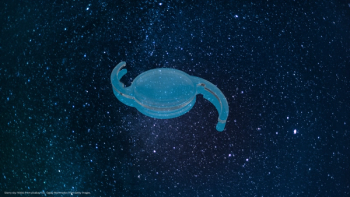
Femto-LASIK: assessment after 12 months of clinical experience
Since we have been using the femtosecond laser, we have not had to fit a single therapeutic contact lens
Since the development of the femtosecond laser-assisted LASIK and the establishment of the first generation of devices for clinical applications in 2001, over 200,000 Femto-LASIK treatments to correct visual defects have already been performed in the USA. This laser technology has also been available in Germany since the end of 2004. Over a year ago, Omid Kermani, MD began replacing the mechanical microkeratome used with LASIK in favour of a femtosecond laser, and reports here on his experience with the new laser-assisted method.
During the one-year period from October 2004 to October 2005, we treated 508 eyes of 260 patients with Femto-LASIK (Intralase, California, USA), accounting for approximately 70% of total LASIK procedures performed at our centre, proving the widespread acceptance of this new method.
Femto vs keratome: is the hype justified?
If we look at the refractive results in the majority of cases, i.e. myopias up to –6.0 D and cylindrical visual defects up to 2.5 cyl, we found that there has been no significant improvement in the three-month results following introduction of the femtosecond laser. In the past four years, there has only been one significant improvement in refractive outcome worthy of note and this occurred in 2002, following the introduction of a new generation of excimer lasers, which was accompanied by a myriad of innovations. Specifically, we were introduced to the use of aspheric ablation profiles, torsion error control and a rapid Eyetracker (200 Hz). From a previous figure of 81% (treated eyes) achieving refraction within ±0.5 D of the target result in 2001, 91% achieved the target result in 2002. We have been able to maintain this success rate with few minor deviations right up to the present day.
Upon closer inspection of the outcome with subgroups, such as hyperopia and astigmatism, along with eyes with particularly steep or particularly flat corneas, surgery success rates are still outstanding. The intra- and inter-individual variance in the curvature of the cornea is infinitely large. The keratometric value reflects only a very small proportion of the real picture and computer-assisted topography of the cornea is more suitable for displaying the aspheric and individual character of the human cornea.
Conventional, mechanical microkeratomes ideally feature three suction rings of varying sizes in order to take this situation into account. In critical cases, where there are very steep and very flat paracentral corneal radii, one can attempt to achieve a greater level of accuracy by selecting an applanation plate that is as thick as possible for the keratome head. The variance in the geometry of the corneal flap that can be generated mechanically is consequently very high. In the case of very steep (≤7.5 mm / ≥45 D) and very flat (8.0 mm / ≤42 D) corneas in particular, unpleasant surprises are becoming a more frequent occurrence. The hinge can be unexpectedly wide or narrow, thus reducing the available ablation zone, or the flap can lose its solid anchor to the cornea. In cross-section, after incision with the microkeratome, the lenticles have a clear meniscal shape. In extreme cases, a central perforation can occur. This phenomenon is known as a button-hole.
Newsletter
Get the essential updates shaping the future of pharma manufacturing and compliance—subscribe today to Pharmaceutical Technology and never miss a breakthrough.













































